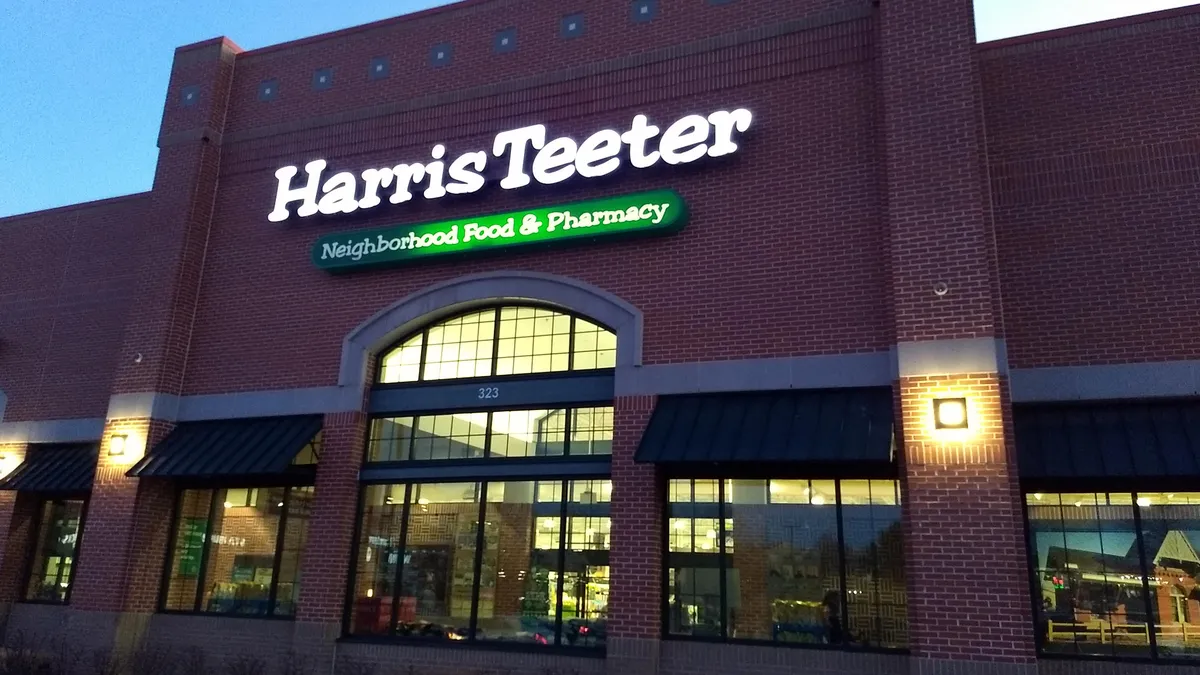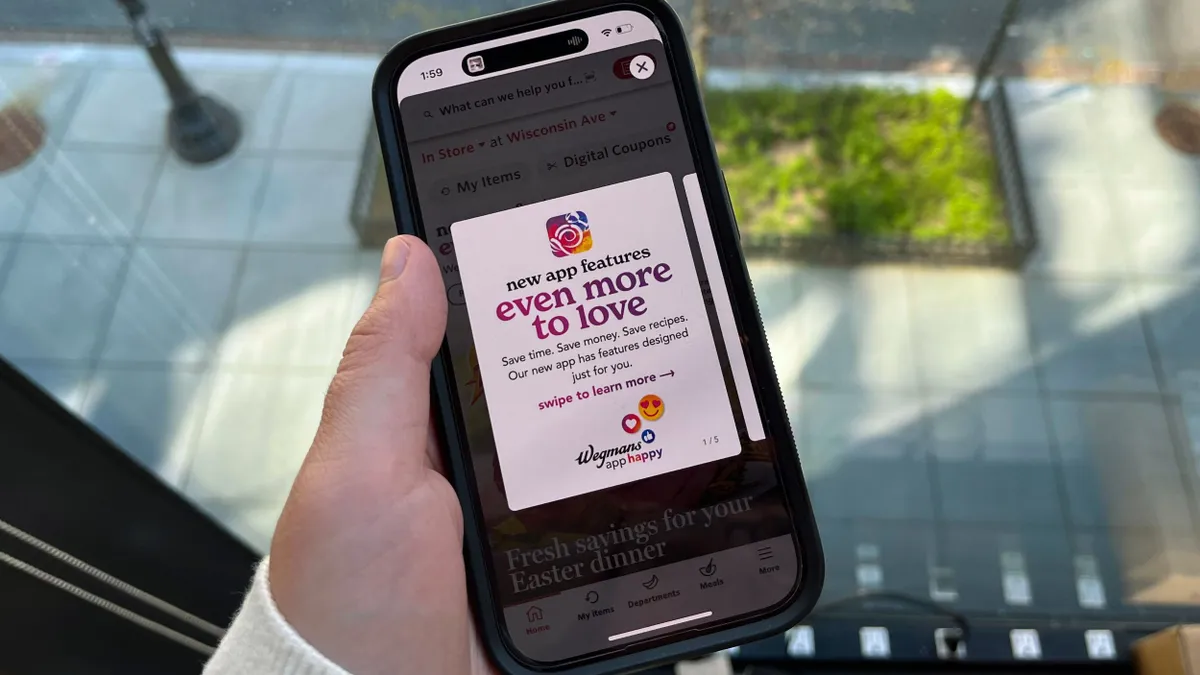Dive Brief:
- Kroger's app developers and data scientists are mining customer information to better focus the retailer's marketing strategies and design the grocery store of the future, according to The Wall Street Journal.
- They also are testing apps for mobile devices focusing on consumer preferences so that individualized recipes and shopping lists can be made available through those channels. Researchers are devising ways to find sales based on whether the shopper eats meat or needs help finding recipes for a specific item.
- Kroger executives say technology, although it is expensive, is necessary for the company to maintain its competitiveness in an increasingly tough retail environment. “Data is the new battleground,” Stuart Aitken, chief executive of 84.51˚, Kroger’s data-analytics unit, told the business publication.
Dive Insight:
With Amazon's recent push into retail with its $13.7 billion purchase of Whole Foods, the profile of grocery store analytics has been elevated even more. Prior to its acquisition by Amazon, Whole Foods was focusing on its most loyal customers with data-rich category management allowing it to reveal what their consumers want. It allowed Whole Foods to better leverage its product offerings and tailor targeted promotions, which was seen as enhancing efficiency.
Some have even speculated the real reason behind Amazon’s acquisition was data. To be sure, Whole Foods gives Amazon a sizable physical grocery presence. But Amazon’s main goal is not just to dominate brick-and-mortar grocery — or even the broader grocery industry — but to use its findings from Whole Foods to improve its pricing and promotions in all the categories it covers.
Kroger likely was deep into its work on data long before this merger took place, but the transaction further highlights the growing importance such information has in today's ultra-competitive marketplace. Without having access to reams of valuable data, businesses risk not having the most relevant and money-making information on how to sell products and get their increasingly online-savvy consumers to buy them — and keep shoppers from flocking to their competitors such as Walmart, Aldi, Lidl and Amazon.
Kroger may be mulling those data-derived benefits and also seeking any advantage to reposition itself after its latest financial performance. The company's most recent earnings report showed second-quarter profits slipped 7% compared to the second quarter of 2016, although same-store sales were up 0.7%.
Bolstering marketing efforts are the rich data Kroger gathers through its 84.51° analytics firm (named for the longitude of the company's Cincinnati headquarters). Kroger sees 96% of every transaction, according to Stuart Aitken, the analytic firm's CEO, including what other stores customers shop, what car they drive, whether they use an Android or iPhone, and numerous other metrics.
What's still unclear is how much brick-and-mortar shoppers will welcome a data-driven shopping experience. The idea of “presence marketing” — combining online and offline shopping analytics based on a person’s past purchases and tracked movements throughout the store with cameras and sensors — will be a huge win for companies that have diversified product lines. It's uncertain whether the added convenience and assistance it offers to shoppers will be enough to overcome the concern from those who view the added insight as being too obtrusive.









